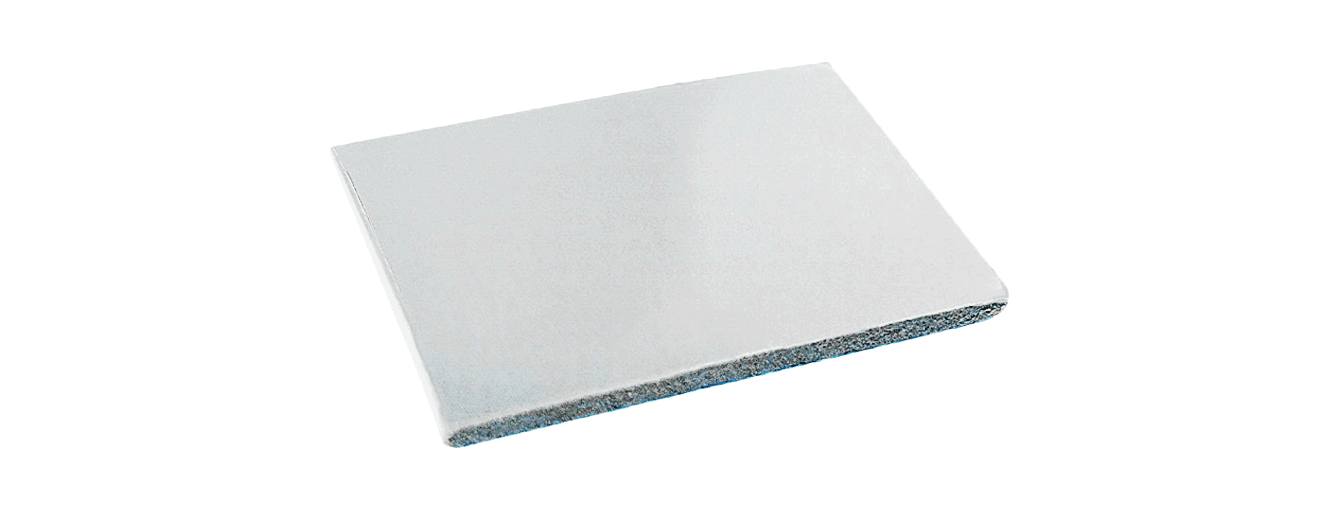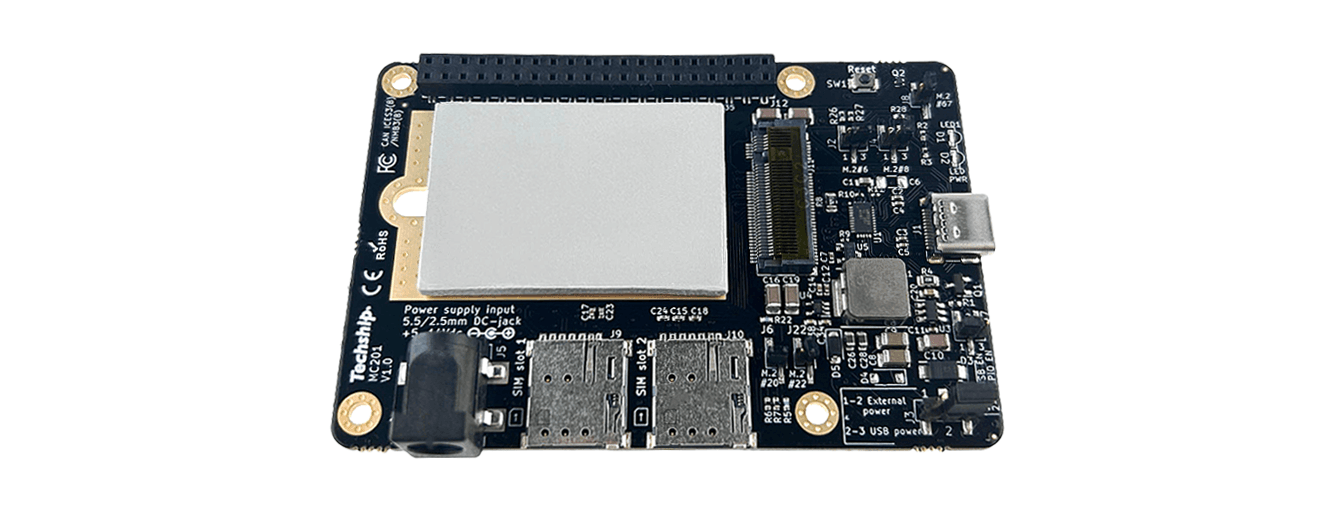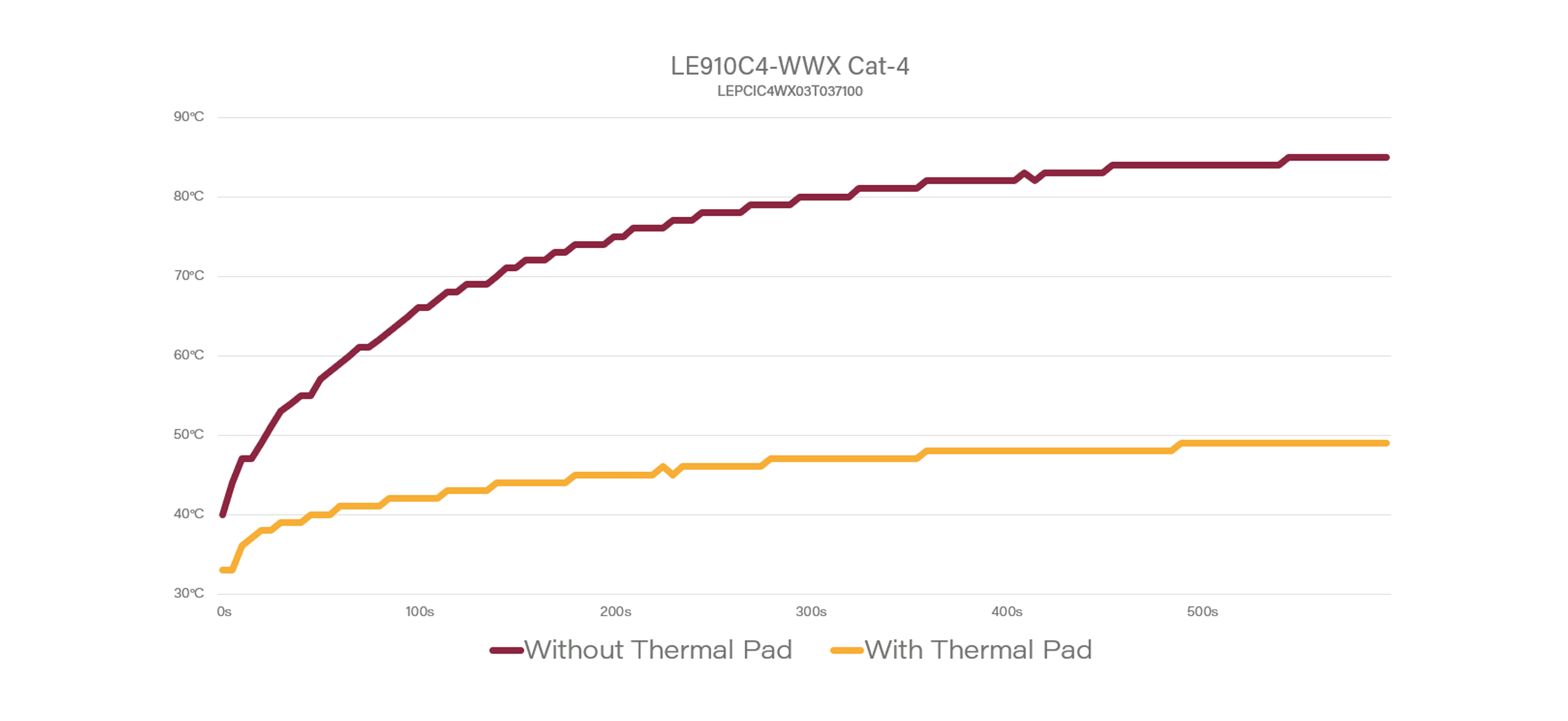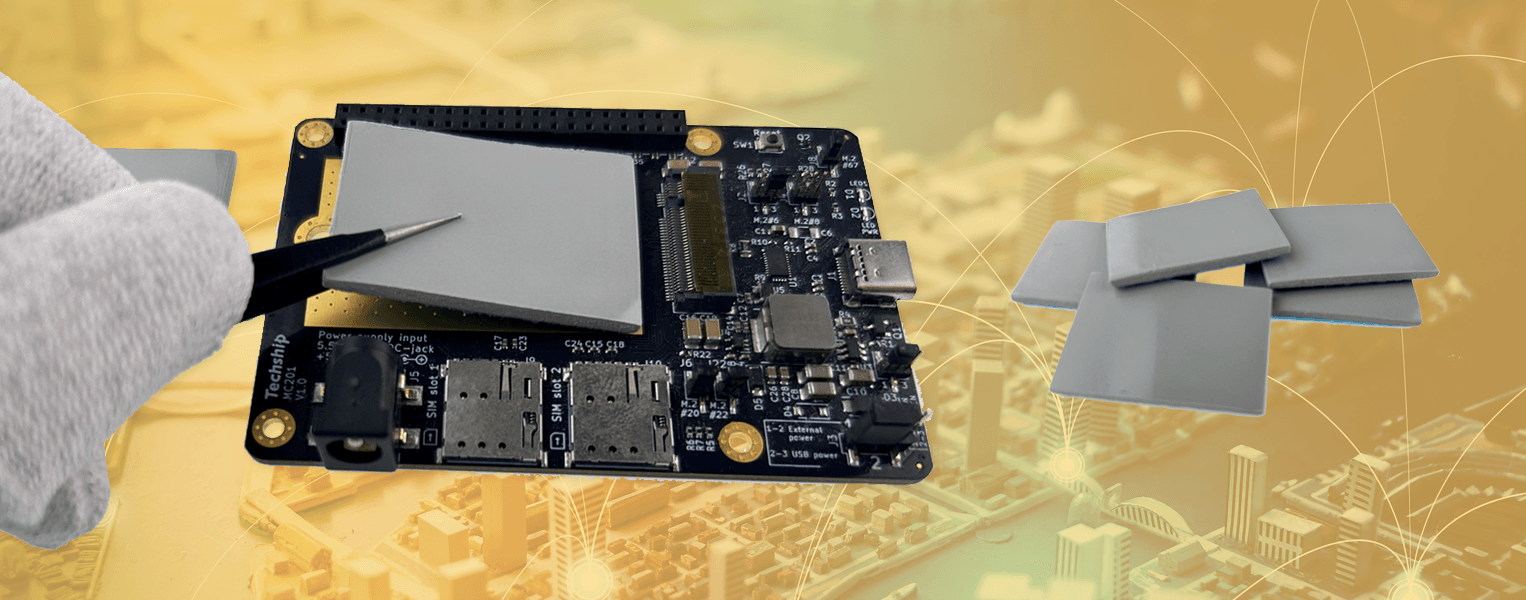Extreme heat and electronic components aren't a favorable combination. When components operate at high temperatures, their performance can degrade, lifespan can shorten, and in extreme cases, they can suffer irreversible damage. As communication technology gets more advanced, the challenge of managing heat becomes even more critical. When it comes to cellular modules, overheating can lead to thermal throttling, reduced efficiency, or even complete device failure. Thermal mitigation measures can be used to avoid these undesired behaviors.
The product
To assist our customers with heat management, we have added thermal pads to our product portfolio. These pads are an effective and versatile solution for transferring heat away from the cellular module, effectively decreasing the operating temperature.

How it functions
Thermal pads are made of soft, flexible materials designed to fill the space between heat-generating components (such as cellular modules) and metal surfaces. A key advantage of them is their ability to conform to most surfaces by being malleable, filling small gaps that would otherwise trap heat and impede thermal transfer. They act as a thermal interface material, conducting heat from the component to the underlying board, which spreads the heat over a larger area and then dissipates it into the surrounding environment.
Integration guidelines
When it comes to applying thermal pads, the process is simple yet crucial for ensuring optimal heat dissipation. Most cellular modules are designed to transfer heat both upwards and downwards, often with a large conductive area on the back of the module. Therefore, it’s essential to place the thermal pad between the module and the underlying board to facilitate effective heat transfer.
The first step of integrating thermal pads is to select the correct size. As modules and connectors come in different sizes, so do thermal pads. We have tailored our assortment of thermal pads to the cellular modules we offer in combination with our adapters, ensuring that the module’s thermally conductive surface is covered. A compression ratio of at least 10% has also been taken into account to minimize airgaps to ensure a good thermal connection.
Before mounting the thermal pad, make sure that the contact surfaces of both the board and the module are clean and free from dust. Then, remove the plastic cover from one side and place it on the board. After ensuring that the placement is correct, the other plastic cover can be removed, and the module can be inserted into the slot and gently pressed onto the thermal pad. The procedure is done once the module is screw-mounted and secure in its place.

Testing the effectiveness
To demonstrate the effectiveness of our thermal pads, we conducted a test comparing temperature behavior in two scenarios: one with a thermal pad applied between the cellular module and the underlying board, and one without. The goal was to observe the temperature regulation capabilities of the thermal pad during an intensive workload, as thermal control becomes crucial when cellular modules operate under high data throughput.
For this test, we ran a 10-minute throughput test in the upload direction on the cellular module, a common task that significantly increases module temperature. Throughout the test, we continuously queried the temperature of the module to monitor its performance over time.
The graph below illustrates the temperature progression of the cellular module in both scenarios, one without a thermal pad and one with a thermal pad applied.

The graph shows a clear difference in temperature between the two setups. The orange line representing the test with the thermal pad remains consistently lower, demonstrating that the thermal pad mitigated excessive heat build-up effectively. This results in a more stable operating temperature for the module, which can improve its performance and reliability over time.
Our test shows that using a thermal pad provides a valuable improvement in heat management for cellular modules, especially under data transfer loads.
Our offering
We're excited to bring these thermal pads to our product portfolio, making it easier than ever for our customers to keep their electronics cool and running efficiently. Feel free to explore our range of thermal pad sizes and do not hesitate to contact us if you need assistance with selecting a suitable size for your application. Experience the difference that optimal heat dissipation can make in your projects!

Share:
Reasons to consider 5G RedCap
End-certified modems vs. pre-certified modules – What's the right path?